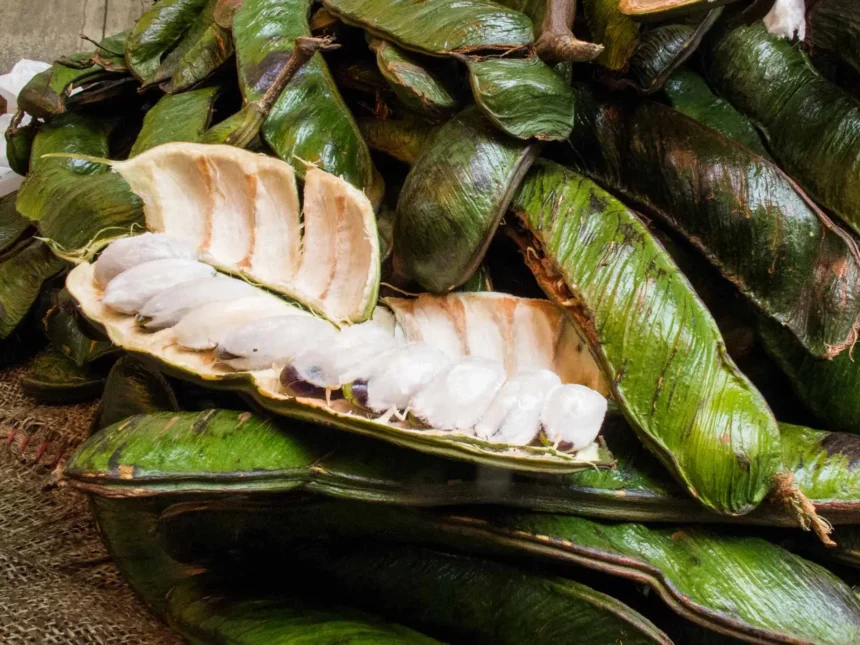How to Cultivate Inga Edulis Successfully
Inga edulis commonly known as the ice cream bean tree, is a fast-growing, nitrogen-fixing tree native to Central and South America. It is valued for its sweet, edible pods, soil-improving properties, and ability to provide shade. Successfully cultivating Inga edulis requires understanding its growing conditions, propagation methods, and care techniques. This article explores essential guidelines to help you grow this remarkable tree.
1. Understanding Inga Edulis
Before diving into cultivation techniques, it is crucial to understand the characteristics of Inga edulis. This evergreen tree belongs to the Fabaceae family and thrives in tropical and subtropical climates. It can grow up to 30 meters in height but is often pruned to a manageable size. The tree produces long, green pods filled with a sweet, cotton-like pulp surrounding black seeds. Besides being a source of food, it plays an essential role in agroforestry, soil conservation, and reforestation projects.
2. Ideal Growing Conditions
To successfully cultivate Inga edulis, you must provide the optimal growing conditions:
- Climate: This tree prefers warm, humid climates with temperatures between 20°C and 30°C (68°F to 86°F). It can tolerate light frosts but thrives best in frost-free environments.
- Soil Requirements: Well-drained, fertile soils with a pH between 5.5 and 7.5 are ideal. It can adapt to poor soils due to its nitrogen-fixing ability.
- Sunlight: Inga edulis requires full sunlight to partial shade. While it can tolerate some shade, it grows best with ample sunlight exposure.
- Rainfall: The tree flourishes in areas with annual rainfall between 1,500mm and 4,000mm. It can withstand short dry periods but benefits from consistent moisture.
3. Propagation Methods
Inga edulis is primarily propagated through seeds, though cuttings and grafting are also possible.
- Seed Propagation: Fresh seeds have a high germination rate but lose viability quickly. Plant seeds within a few days of extraction from the pod.
- Soak seeds in water for 12-24 hours before planting.
- Sow seeds directly in the ground or in containers filled with nutrient-rich soil.
- Keep the soil moist but not waterlogged.
- Germination typically occurs within 1-2 weeks.
- Propagation by Cuttings: This method ensures genetic consistency but requires more effort.
- Take semi-hardwood cuttings about 20-30 cm long.
- Dip cuttings in rooting hormone to enhance root development.
- Plant in a well-draining soil mix and maintain humidity.
- Grafting: Used primarily for commercial purposes to ensure specific fruit quality.
- Graft young scions onto established rootstocks.
- Protect grafts from excessive sun and wind until they establish.
4. Planting and Spacing
Proper planting techniques and spacing ensure optimal tree growth.
- Site Preparation: Clear weeds and prepare the soil by adding compost or organic matter to enhance fertility.
- Spacing: If planting multiple trees, space them 5-8 meters apart to allow adequate growth and airflow.
- Planting Depth: Place seeds or young saplings in holes about 30 cm deep, ensuring the root system is well covered.
- Mulching: Apply mulch around the base of young trees to retain moisture and suppress weeds.
5. Watering and Fertilization
- Watering: Young trees require frequent watering to establish strong roots. Water at least 2-3 times per week in dry periods. Mature trees are more drought-tolerant but benefit from occasional deep watering.
- Fertilization: Though Inga edulis is a nitrogen-fixing tree, additional nutrients enhance its growth.
- Apply organic compost or well-rotted manure during planting.
- Use balanced fertilizers (e.g., NPK 10-10-10) for young trees.
- Once established, reduce fertilization, as the tree improves soil fertility naturally.
6. Pruning and Maintenance
Regular pruning improves tree health and productivity.
- Formative Pruning: Shape young trees to develop a strong structure.
- Height Control: Trim the tree to maintain a manageable size, especially if grown for shade or alley cropping.
- Removing Deadwood: Cut off weak, diseased, or damaged branches to encourage vigorous growth.
- Leaf Litter Management: The fallen leaves act as a natural mulch, enriching the soil and reducing the need for additional fertilizers.
7. Pest and Disease Management
Inga edulis is relatively resistant to pests and diseases but may occasionally face issues.
- Common Pests:
- Aphids and scale insects can attack young leaves and shoots. Use neem oil or insecticidal soap to control infestations.
- Caterpillars and beetles may feed on foliage but rarely cause severe damage.
- Diseases:
- Root rot can occur in waterlogged conditions; ensure proper drainage.
- Fungal infections can be managed by pruning for airflow and using organic fungicides if necessary.
8. Harvesting and Uses
- Harvesting Time: Inga edulis begins producing fruit within 3-5 years. The pods are ready for harvest when they turn slightly yellow and soften.
- Harvesting Method: Gently twist or cut pods from the tree to avoid damaging branches.
- Storage: The sweet pulp inside the pods is best consumed fresh but can be stored in refrigeration for a few days.
Uses of Inga Edulis:
- Food: The sweet pulp is eaten fresh or used in desserts and beverages.
- Agroforestry: The tree is widely used for shading coffee and cacao crops and improving soil fertility.
- Reforestation: Its fast growth and nitrogen-fixing properties make it ideal for restoring degraded lands.
- Timber and Fuel: The wood is used for construction, firewood, and making tools.
9. Benefits of Growing Inga Edulis
Growing Inga edulis offers numerous ecological and economic benefits:
- Improves soil quality by fixing nitrogen and reducing erosion.
- Provides shade and windbreaks in agroforestry systems.
- Supports biodiversity by attracting pollinators and beneficial insects.
- Offers a sustainable source of food and income for farmers.
Conclusion
Cultivating Inga edulis successfully requires proper site selection, propagation, care, and maintenance. By understanding its growth requirements, implementing effective pest management, and maximizing its benefits, you can enjoy the many advantages of this remarkable tree. Whether for food production, soil improvement, or ecological restoration, Inga edulis is a valuable addition to any landscape.





